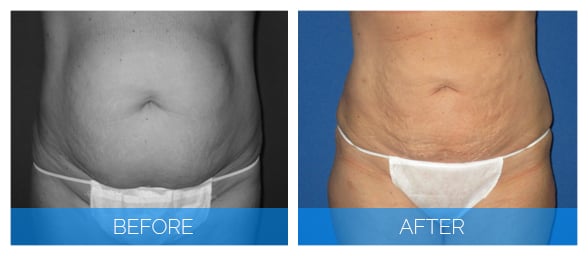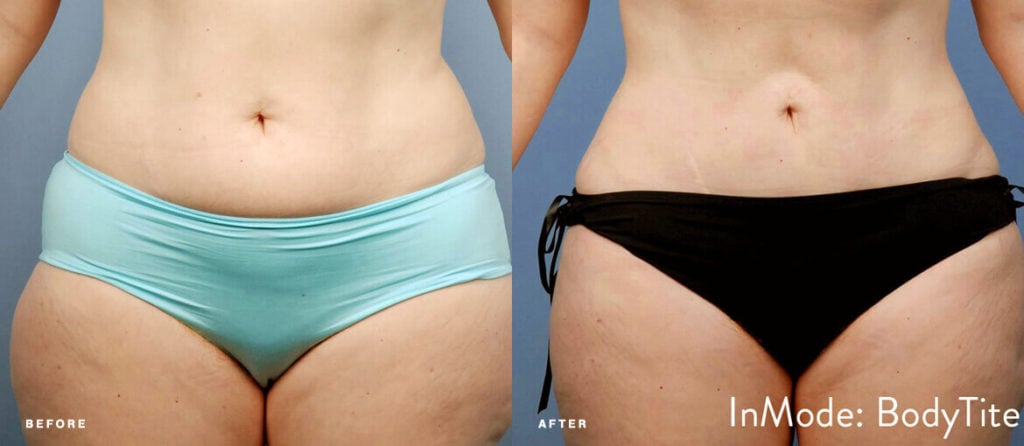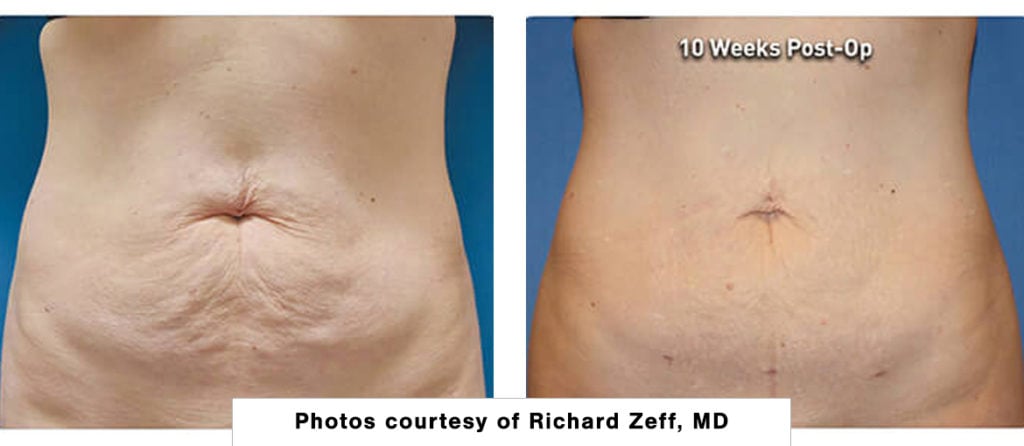
Medically reviewed by Dr. John Rosdeutscher – Written by Sine Thieme
Should You Have Liposuction or Skin Tightening?
No, they are not the same – albeit they both help reduce the appearance of subcutaneous tissue. But they can be combined into one procedure. Below, our experienced liposuction staff at NuBody Concepts Cosmetic Surgery in Nashville and Memphis explain why you should consider adding radio frequency assisted lipolysis aka skin tightening to your liposuction.
First, let’s define some terminology. It has become more and more confusing to know which fat removal procedure is right for you. Are AirSculpt, BodyTite, CoolSculpting, laser lipo, regular liposuction, Lipo 360, Renuvion, SculpSure, SlimLipo, SmartLipo, TriSculpt, and VASERLipo more or less the same thing? What is the difference between non-invasive, non-surgical, minimally-invasive, and surgery, and which one is best?
Read on to learn more about the comparison between liposuction and skin tightening and how they can benefit each other – from a non-invasive to surgical perspective.
Liposuction Alone Does Not Tighten Skin
Liposuction – the actual suctioning of fat from the body – only removes fat and does not tighten the skin. When you have liposuction, your fat is broken up and flushed from the areas you are having treated. If you have awesome skin elasticity because you’re young and/or haven’t gone through childbirth, then this may be all that you need to achieve a flat belly (or slim thighs or arms) with taut skin.
But what if you do have skin elasticity issues? This may be a real problem for an older individual whose skin elasticity has declined over time, for patients who have undergone substantial weight loss, or for women who have gone through pregnancy and childbirth. If any of these apply to you, chances are that your skin will not shrink back to a thinner contour. You will be left with extra folds and wrinkles like a deflated balloon.

This is where minimally-invasive skin tightening using laser, ultrasound, or radio frequency energy comes in. It is not very different from liposuction – in fact, most people view it as just another liposuction method. In both cases, the plastic surgeon applies a “wetting solution” under the skin to cover the entire treatment area. This has the effect of numbing the area and loosening the tissues. He or she can then either suction off the fat (i.e. liposuction) using a suction cannula, or shrink the tissues under the skin using a slightly different cannula generating bursts of targeted heat.
Combining Liposuction with Skin Tightening
Could you have liposuction by itself? Absolutely. But again, for most patients the results won’t look as aesthetically pleasing as they would with added skin tightening. If you think of the tummy as an inflated balloon, liposuction without skin tightening is akin to letting out the air and being left with a shriveled balloon.
Since both liposuction and skin tightening require almost exactly the same prep work, it makes a lot of sense to apply both lipo and skin tightening at the same time for better results. The procedure will be only marginally longer, you won’t be adding any extra recovery time, and the added cost is typically affordable.
In fact, this is what some plastic surgeons offer when customizing your liposuction treatment – a combination of suction and shrinking of tissues. However, not all skin tightening is created equal. At NuBody Concepts, we are alway testing the latest technologies to make sure we offer our patients the best results with the least disruption of their lifestyle. In our experience, radio frequency assisted lipolysis (RFAL) today offers the best skin contraction aside from actual surgery like tummy tuck, thigh lift, and arm lift. It is far superior to other branded methods that claim skin tightening results, such as AirSculpt, SlimLipo, or TriSculpt.
Which Skin Tightening Works Best With Liposuction?
During your consultation with a plastic surgeon, it is important to understand which procedures he or she is planning to perform. Will your liposuction be combined with skin tightening or not? Will they use the older and less effective laser technology to contract tissues, or the much more powerful radio frequency technology? Will they only use a method to shrink tissues or will they first apply liposuction to make sure all fat deposits are gone?


At NuBody Concepts, we perform both BodyTite and Renuvion skin tightening in conjunction with liposuction. Both use the aforementioned radio frequency powered energy to contract tissues under the skin while leaving the surface intact. They have shown skin contraction results from 35% to 60%, more than any other non-surgical treatment. Patients who won’t get great results from liposuction alone yet aren’t ready to undergo more invasive surgery are ideal candidates for BodyTite or Renuvion.
Renuvion is different from BodyTite in that it adds bursts of helium plasma to the radio frequency. This heats a very targeted area to an even higher temperature in a shorter timeframe, allowing the plastic surgeon to proceed faster. In reality, this is not something to worry about. Your main focus should be the outcome, which is determined by the surgeon’s skill with his or her preferred equipment.
Why Liposuction is Better Than Non-Invasive Fat Removal
Up to this point we have only talked about minimally-invasive procedures. Both liposuction and skin tightening use a thin cannula inserted under the skin to break up or contract fat cells. They are so easily combined because they follow the same steps and have a similar recovery time – 1-4 days for the swelling to subside.
There are options for fat reduction that are even less invasive than liposuction. CoolSculpting or “fat freezing” applies extreme cold to the skin to damage underlying fat cells. SculpSure does the opposite, using externally applied heat. Both methods do not need any incisions, can be administered without anesthesia, and require even less downtime than minimally-invasive procedures. But they have several drawbacks compared to liposuction: 1) you will need several repeat treatments to see a noticeable effect, 2) even so, the effect is much less noticeable, and 3) they do not include skin tightening. We see a good amount of patients who are opting for BodyTite and Renuvion to fix undesirable CoolSculpting results.
There are also other options for skin tightening than BodyTite and Renuvion. Exilis uses external radio frequency energy to shrink tissues and can be applied almost anywhere on the body. Morpheus uses a microneedling device to shrink tissues and stimulate collagen production. These are good options for patients who want smaller adjustments, but you won’t get the same effect as their more invasive counterparts.
Tummy Tucks for Surgical Fat Removal
As we have laid out above, you will likely achieve the best results from a combination of liposuction and radio frequency assisted lipolysis. But there is one procedure that trumps both: tummy tuck surgery efficiently removes excess fat and skin tissue. As does an arm lift or thigh lift. If you’re not opposed to a surgical procedure with a longer recovery and longer scar, a tummy tuck is the best way to accomplish both goals.
We hope that we’ve given you a better understanding about liposuction vs skin tightening. Please don’t hesitate to contact us if you have any other questions.
If you are ready to get started, use the pink button to schedule a consultation with our board-certified plastic surgeon in Nashville or Memphis.












